A Lesson in Genocide
To be honest, I went back to Africa in 2023 for one main reason. I wanted to trek to see the gorillas in the wild in Rwanda before my body failed me. However, the trip was so much more than the gorillas, as you will read in the following paragraphs. I traveled with a great tour group called OAT, Overseas Adventure Travel, with 9 other American tourists and two Rwandan guides. (Click on any highlighted links below for more information)
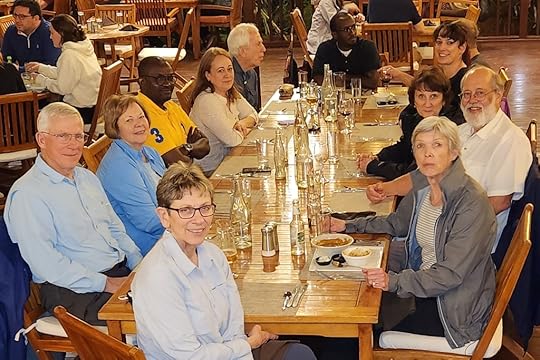

On day one, I entered my hotel in Kigali, called the Hotel des Milles Collines (which means 1000 hills). This was the actual film location of the famous movie “Hotel Rwanda”. This was the true story of the Rwandan genocide, the systematic slaughter of about 800,000 Tutsis in 100 days led by the Hutu-led assault. If you saw the movie, you may recognize the swimming pool.
Our guidebook forewarned us that it would be difficult learning about the genocide that became an organized assault on April 7, 1994. Sure, I knew about the death camps built by the Nazis in the 40s, but I didn’t realize what I would experience in the following days outside Kigali in the Nyarubuye Roman Catholic Church in Kibungo, now referred to as the Nyarubuye massacre. We spent a couple hours at the church where the Tutsi slaughter of families took place. Its presentation was poignant and painful.
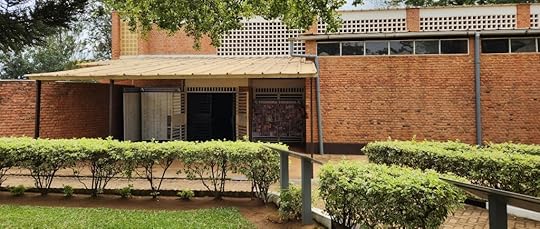
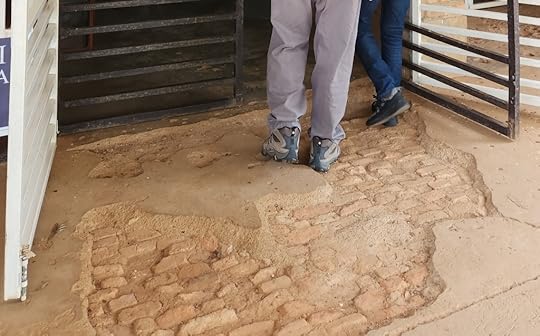
The most horrific was the barricaded church where the Tutsi refugees took harbor and were then allowed to be massacred with the knowledge of the church staff. The bomb blast of the barricaded front door where entry was gained was a strong symbol of determination and shear brutality of their killers.
The clothing of the dead remained in the church pews that we were forbidden to film. Of the very few who survived it was revealed that the church staff and priests told the Tutsis that “their fate was willed by God, they were ‘cockroaches’ of the community, and they must die.” Pope Francis recently visited Rwanda in 2017 to ask for forgiveness for such a horrific act committed by the Catholic church.
I was sickened, nauseated, and felt tremendous grief of this government sponsored slaughter of innocent men, women, and children in the House of God. I thought the greatest impact of this memorial was over as I began my museum tour. But the worst was yet to come. The museum guided me through the exhibition called “Wasted Lives,” the timeline in parts of the world where genocide had occurred including the Holocaust, the Balkans, Cambodia, and Namibia. Over and over again, humankind never seems to learn that the killing of others who don’t look or believe like we do has NO merit or lasting impact. By the time I exited the museum, two hours later, every cell in my body was drained.
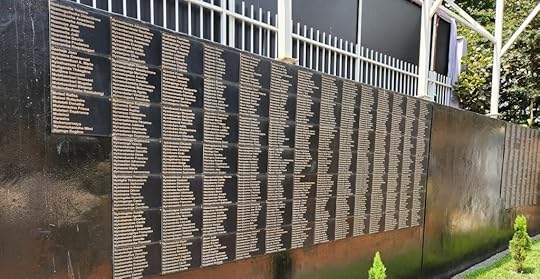
My fellow tourists and I were somber on our bus ride back to our hotel. One summed it up by saying “each genocide throughout the world was government sponsored, planned, and organized by the leaders of that country.” Hate that permeates so deeply that it justifies the extinction of a species, tribe, or an ethnic group is absolutely the most heinous crime possible. Think twice before you vote for anyone who supports hate.
Having no personal experience and little understanding about genocide, I never thought that the 1990 slaughter of the people in my village in Zorgowee, Liberia as genocide. I wrote about this in my memoir Epilogue, In Search of Pink Flamingos. Yes, I knew it was in response to hate and revenge, but I never considered it as literal obliteration of an entire ethnic group of the Mano and Gio in Liberia. When President Doe’s soldiers pursued the Gio and Mano wherever they lived in the entire country and elsewhere, including the refugee camps in Ghana and Ivory Coast, he had ethnic cleansing as his mission.
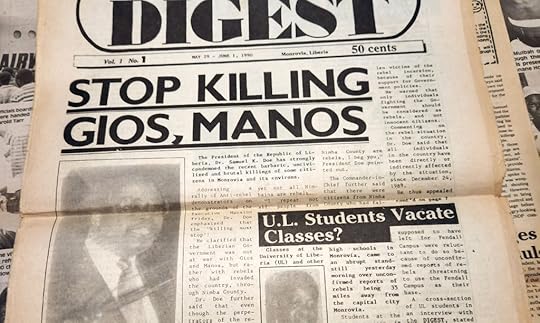
When the people you love/loved and cared about, including children, were innocently killed because they were of the same ethnic group as the warring opponent, the pain in my heart and soul ran very deep. I cried then and I cry now. It was less than a year ago that I learned the complete story of the massacre of the people in my village that occurred 23 years earlier. Read my previous blog entitled “War and Reunion” to learn more.
Of course, all was not doom and gloom in my visit to Rwanda. Many of you have read about the reconciliation after the genocide 28 years earlier led by World Vision. But to see the country thriving, and warring ethnic groups now living together in villages was heartwarming. OAT took us directly to a village where that happened. We sat in a large circle with Hutus and Tutsis now living together harmoniously.

We were able to query the villagers about how this transpired and how long it took. This Tutsi village now has a Hutu Chief (first photo) chosen by the villagers. The second photo is a Tutsi leader who lives there also. If we had not seen it firsthand, it would have been hard to believe. See the wonderful villagers below.


 Susan & Elizabeth with her basket
Susan & Elizabeth with her basket Beautiful women
Beautiful womenSo many lessons were learned about genocide and I departed Rwanda with a renewed hope of humankind. Maybe there is hope for us all.
P.S. Did I see the gorillas in the wild? YES! I will include this story in another blog.
Join my email list to receive periodic blogs with companion photos and backstories on both books.
Processing… Success! You're on the list. Whoops! There was an error and we couldn't process your subscription. Please reload the page and try again.
Your reply and comments below are always welcome for our readers



